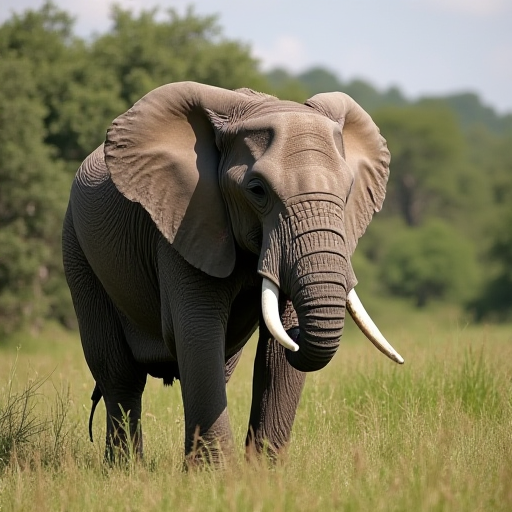
Why Do Elephants Have Long Trunks?
Elephants are among the most fascinating creatures on the planet, not only due to their sheer size and intelligence but also because of their distinctive long trunks. The elephant's trunk is an extraordinary evolutionary adaptation that serves multiple functions crucial to the animal's survival. This article aims to explore the reasons behind the elephant's long trunk, the evolutionary journey it has taken, and its various uses in the elephant's daily life.
Evolutionary Background
The elephant's trunk is essentially an elongated nose and upper lip, with its structure being a product of millions of years of evolution. Elephants belong to the order Proboscidea, a group that includes both extinct and extant species with elongated snouts. The trunk's development can be traced back to ancient ancestors of modern elephants, such as the woolly mammoth and mastodon, both of which also featured similar elongated snouts.
The evolution of the trunk is believed to have been driven by several environmental and dietary needs, allowing elephants to adapt to a variety of habitats, from savannas to forests. The trunk's length and dexterity provide a significant evolutionary advantage, assisting in feeding, social interaction, and survival.
Anatomy of the Trunk
An elephant's trunk is a highly complex organ composed of approximately 40,000 muscles, compared to the 600 muscles in the entire human body. This intricate muscle network allows for remarkable flexibility and strength, enabling elephants to perform a wide range of tasks. The trunk is also equipped with a keen sense of smell, which is critical for detecting food and water sources, communicating with other elephants, and sensing potential threats.
The trunk's tip is especially sensitive and dexterous, featuring projections known as "fingers." African elephants have two such fingers, while Asian elephants have one. These fingers are instrumental in grasping small objects and performing delicate tasks, showcasing the trunk's versatility.
Functional Roles of the Trunk
Feeding and Nutrition
One of the primary functions of the elephant's trunk is feeding. Elephants are herbivores with a diverse diet that includes leaves, branches, fruit, and bark. The trunk acts as a multipurpose tool, allowing elephants to reach high branches, strip leaves from trees, and pluck grass or fruit from the ground. Its ability to manipulate objects with precision makes it an essential tool for acquiring food.
Drinking and Bathing
The trunk is pivotal for drinking and bathing. Elephants can suck up to 8 liters of water into their trunks and then spray it into their mouths. This adaptation is particularly useful in arid environments where water may be scarce. Additionally, elephants use their trunks to bathe by spraying water or dust over their bodies, which helps to regulate body temperature and protect their skin from parasites and sunburn.
Social Interaction and Communication
Elephants are highly social animals, and their trunks play a vital role in communication. They use their trunks to express affection, comfort, and social bonds by caressing or intertwining trunks with other elephants. The trunk is also used in vocal communication; elephants can produce a range of sounds, including trumpeting, rumbling, and growling, by manipulating their trunks.
Defense and Protection
While elephants are generally peaceful creatures, their trunks can serve as formidable defensive tools. In confrontation, an elephant might use its trunk to strike or throw objects at a threat. The trunk's strength and reach can be intimidating to predators or competing animals.
Conclusion
The elephant's long trunk is a remarkable example of evolutionary ingenuity. It serves multiple critical functions, from feeding and drinking to social interaction and defense, making it an indispensable part of the elephant's anatomy. Understanding the complexities and uses of the elephant trunk not only highlights the adaptability of these majestic creatures but also underscores the intricate connections between form, function, and survival in the natural world. As we continue to study and protect elephants, appreciating the role of their trunk is essential in fostering deeper respect and conservation efforts for these intelligent giants.
